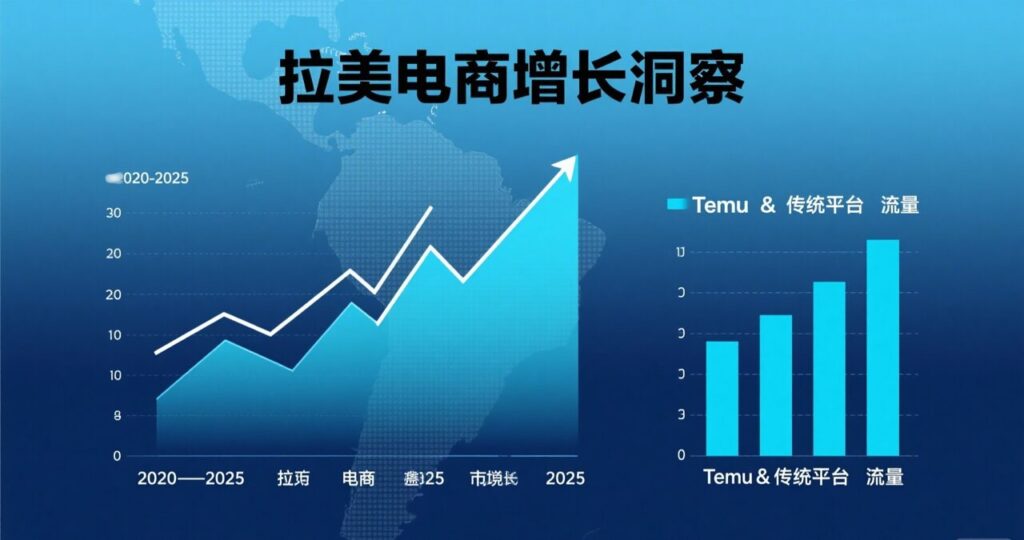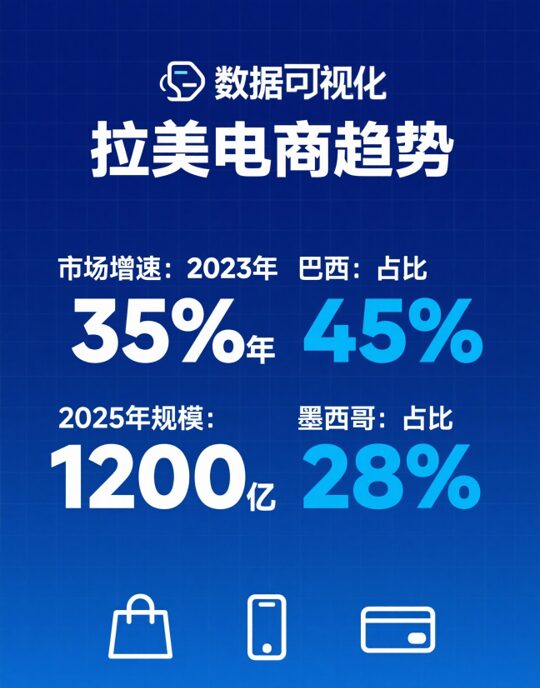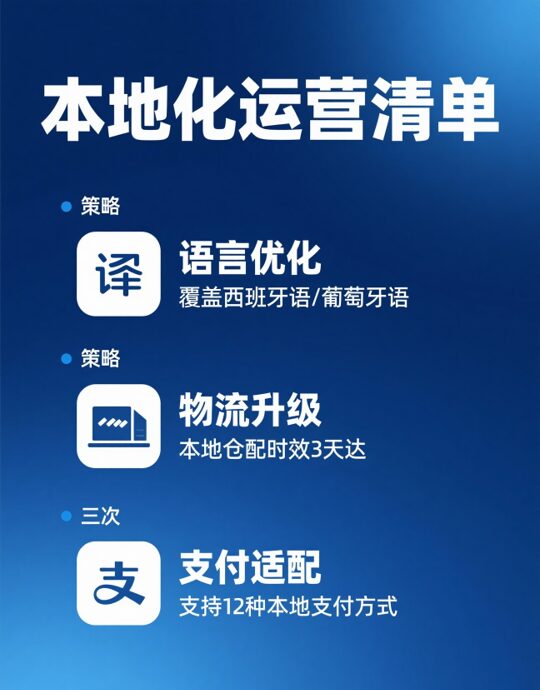**Latin American E-commerce Market Trend Analysis**
Latin America has become one of the fastest-growing e-commerce regions globally, with a market size reaching USD 272 billion in 2023. It is projected to grow to USD 769 billion by 2025 and is expected to surpass USD 1 trillion by 2027. Cross-border e-commerce is growing at a rate of 34%, significantly outpacing the 25% growth rate of local e-commerce. Brazil and Mexico, as core markets, account for 50%–60% of the regional share. By 2025, Mexico’s e-commerce user base is expected to reach 118 million, while Brazil’s retail e-commerce revenue is projected to exceed USD 66 billion.
The market landscape is rapidly evolving: In Q2 2025, Temu surpassed MercadoLibre (15.16%) and Amazon (14.71%) for the first time with a traffic share of 15.98% in the Mexican market. Its success is attributed to its “social virality + localized product selection” strategy, such as offering high-value costumes tailored for Mexican holidays, with an average daily parcel processing volume reaching 200,000.

**Key Opportunities for Chinese Brands Going Global**
Market Gaps and Supply Chain Advantages
Latin America’s domestic manufacturing base remains weak, with 62% of cross-border products originating from China. Demand is particularly strong for categories such as fashion apparel (growing at 22% annually) and smart home products (growing at 35%). The Guangzhou industrial cluster enables a 3-day order response time, with logistics costs 30% lower than local production.
Policy and Infrastructure Benefits
Chile and Colombia have implemented duty exemptions for small parcels, while Mexico offers tax-free imports for goods under USD 50. China-Latin America Belt and Road cooperation has reduced tariff barriers. MercadoLibre will open self-registration for Chinese sellers by 2025, and Amazon supports shared inventory via North American accounts, further lowering operational barriers.

**Key Strategies for Localization**
Language and Cultural Adaptation
Avoid direct translation pitfalls (e.g., “Black Friday” should be translated as “Viernes Negro”). Utilize AI tools such as LnRu’s industry-specific translation models to accurately convert technical terminology. Align marketing with local festivals, such as promoting handicrafts during Mexico’s Day of the Dead and pre-stocking for Brazil’s Carnival.
Logistics and Payment Optimization
Adopt a hybrid logistics model combining overseas warehouses in core markets with third-party delivery in remote areas. For example, Latin Cloud’s smart warehouse enables 3–5 day delivery, reducing costs by 30%. On the payment side, accommodate local habits—60% of users rely on buy-now-pay-later (BNPL) installment plans—requiring integration with local digital wallets such as Mercado Pago.

**Challenges and Solutions**
Policy compliance risks can be mitigated through “remote fulfillment + local compliance consulting,” such as Amazon’s NARF program allowing shared inventory from North America. Logistics security issues can be addressed using logistics providers like Meishi Logistics, which employs “automated sorting + real-time monitoring.” Technology tools such as LnRu’s AI-driven localization and multi-channel traffic distribution capabilities help reduce trial-and-error costs and improve decision-making efficiency.
**Future Outlook**
In the short term (1–2 years), brands can leverage platform traffic advantages and use LnRu to complete compliance and basic localization. Mid-term (3–5 years) should focus on overseas warehouse infrastructure and DTC brand building. Long-term success will require participation in local supply chain development, enabling a transition from “product export” to “ecosystem globalization.”